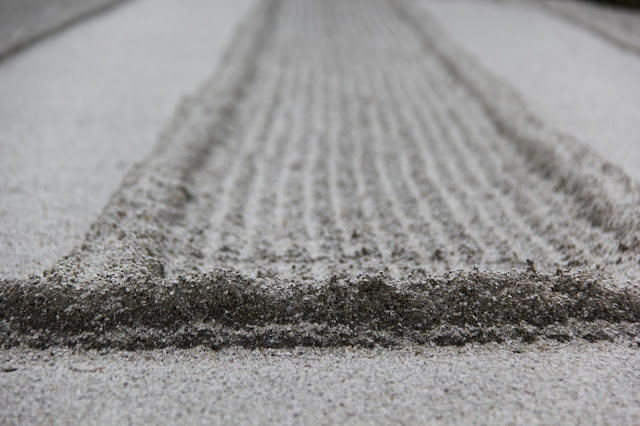JAPAN, BEAUTY IN DETAILS, 2017
After a few days in Tokyo, we took a train to Kyoto where we met with the grandmothers coming from Istanbul. The locals seemed to be waiting for the spring which had just started. The cherry trees were almost in bloom. Sheets were laid down in
parks so people can watch the blossoming trees. Grandmothers loved the
experience even though the traveling was difficult and tiring for them. We had to take the train and the metro quite often and in some cases with heavy
luggages to carry up the stairs of the stations. We had told them not to bring any food, however both
had heavy suitcases full of food with a “just in case we can’t find
anything” justification. It is always fun and funny to travel with them.
In Kyoto, we stayed in a traditional Japanese House called Higashiyama House near Gion. This two story house had a typical Japanese low table around which we spent quite a lot of time where we had to consume our Turkish supplies. The rooms had tatami mats and heated from the floor.
From Kyoto, we were planning on stopping at several towns on the way to Mount Koya. When we found out that in Japan an international licence is required, we made some changes in our plans. The trip was rather long; we took several trains through Osaka and finally a tramway up the mountain. We stayed in a temple together with Buddhist monks (shojin ryori)in Mount Koya. The food made and served by the monks themselves were like a never-ending feast with many Japanese delicacies. We attended an early morning prayer next day at 6:00 am before touring the surroundings.
Kyoto
Kyoto is now a familiar place to us. We even got to know an elegant old lady who owns a restaurant who remembers my daughter from when she was a baby.
The gentleness of the Japanese people still amazes me especially in temples. Located at one end of the peaceful creek side Philosopher's walk Ginkakuji Temple or the Silver Pavilion is an elegant example of the simplicity of wabi sabi.
Wabi sabi 侘び 寂び is an aesthetic sensibility that finds a melancholic beauty in the impermanence of all things. It is an understated beauty in modesty and imperfect and sometimes decayed. This is something I desire to achieve with my art as well, a peaceful simplicity without
details that obscure the art’s imaginary attributes. I admire the feeling of recorded time on the surfaces of used objects, like old shoes.
 |
| Ginkakuji Temple |
 |
| My daughter at the Higashiyama House, Kyoto |
Gion is where the geiko (geisha) and maiko (apprentice for geiko)walk hastily in tiny steps. This district of Kyoto has become a geisha hunt for my daughter who loves to search out the geishas since she was a little kid. This photograph was taken by her.
Higashiyama is a historical district of Kyoto with wooden buildings and temples.
Honen-in Temple also on the Philosopher's walk is a peaceful temple with a carp pond and raked sand garden. In the approaching dusk, a walk in the moss covered gardens of the temple reveals beauty in the details made by gentle intentions.
|
In Japan, stones ties with ropes are seen on pathways or entrances. According to legend, these stones called sekimori ishi originated with the tea master Sen no Rikyu (1522-1591). He once invited a famous Zen priest. Before the priest arrived, Rikyu placed a a little pot in front of the door, playfully challenging his guests to find a way in without crossing this symbolic barrier. The convention developed in tea circles of marking boundaries with tied-up stones. No one knows when a stone replaced a pot.
 |
| Sekimori Ishi (boundary-guard stone) at the Honen-in Temple |
 |
| Getting accustomed to chopsticks |
Sannen-zaka - It takes its name from the belief that if you fall you would be cursed for 3 years, thus the 3 year slope.
Mount Kōya (高野山, Kōyasan)
Kōbō-Daishi (弘法大師) or Kūkai (空海) (774-835) founded the Shingon school of Buddhism. He wandered around Japan for years in search of a suitable place to center his religion before establishing a mountain retreat in Mount Kōya. Legend says that he decided on this place after his sankosho, a Buddhist ceremonial tool was stuck in the branches of a pine tree while.
 |
| Our dearest grandmothers at the Buddhist Temple we stayed |
The graveyard contains over 200,000 gravestones and monuments in the ancient forest. When Kobo Daishi rises up to meet the Buddha of the Future so too will all those resting in the cemetery.
 |
| Supposedly a wish for more beauty is inscribed by coloring this Buddha statue |
Kongōbu-ji, temple of the Diamond Mountain, is the headquarters of the temples. The rock garden is Japan's largest with white gravel which are collectively meant to represent two protector dragons rising from a sea of clouds.












Comments
Post a Comment